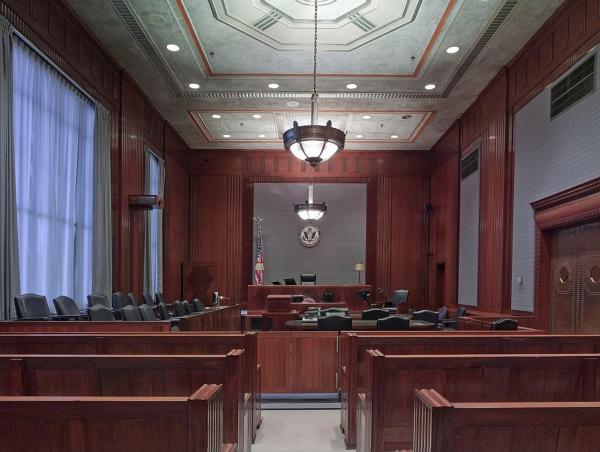Mostly, patients don’t get to know what goes on behind the closed doors of M&M conferences. [1] Mostly, they don’t care except when malpractice is involved. And then they often want to know what the doctor’s peers had to say about the care they received. Generally, state law prevents disclosure. [2]
In New York, for example, the law is clearly enunciated by statute, ratified by New York’s highest court in 1998 when a malpractice plaintiff tried to access “behind closed door” records.
“The purpose of the discovery exclusion is to "enhance the objectivity of the review process" and to assure that medical review committees "may frankly and objectively analyze the quality of health services rendered" by hospitals … By guaranteeing confidentiality …. this provision is designed to encourage thorough and candid peer review of physicians, and thereby improve the quality of medical care.” - Logue v. Velez
But there is a catch. The law excludes from protection anyone against whom a malpractice action is pending. Last year, based on this exception, a New York court opened the door to revealing what transpires at these “secret” meetings,
“Those persons whose conduct is subject to review were not intended to benefit from the protections afforded by the statute.” - Siegel v. Snyder
The facts are simple. The plaintiff was injured in an auto accident and suffered brain injury. Three Trauma Peer Review Committee meetings were held, pursuant to applicable statutes. Mostly, the discussants were not identified. In response to the plaintiff’s demand for production of the minutes, a heavily redacted version was submitted. The court said “No go,” holding the burden was on the defendant to show that the exclusion did not apply. The court ruled they had failed. [3]
“Unfortunately, our ability as physicians to review medical errors fully and openly with our peers is under attack.”
- Viks Mehta, MD, MPH and Melinda S. Sharkey, MD Erosion of Peer Review and Quality Assurance Privilege
Doctors are outraged. They claim the court ruling chills free and full dissection of the case, vitiating the benefits of open and safe discussion.
This isn’t quite the case. Rather than agreeing to append their name to their comments (which would have garnered protection), physicians at the conference remained anonymous. Perhaps this was a misguided attempt to protect the physician named in the lawsuit, thinking that if no one were identified (including the physician sued) - all would be protected. Instead, that scheme (if it was such) backfired, and all the physicians (and the hospital) were tainted with the exception.
The medical community claims that as a protective measure, M&M committees now are keeping incomplete minutes or using hypotheticals –- at the expense of improving health care. The med-mal defense bar is similarly concerned.
“'Siegel v. Snyder,'… broadly expands discovery of quality assurance documents and statements despite the clear statutory prohibitions. Before this error is corrected by the legislature or the Court of Appeals, it should be expected that there will be considerable activity in this area of discovery for pending malpractice cases.”
- John L.A. Lyddane, Medical Malpractice Defense lawyer.
Although less pessimistic about the long-lasting impact, at least one defense lawyer believes that this invasion of confidentiality will be remedied either by new legislation or overturned on appeal (which isn’t in the cards).
What we have here is a tug of “rights”: the plaintiff’s “right” to know what the doctor’s peers say versus the hospital’s “right” to batten down the hatches and withhold any hint of lapse in judgment. (Error, per se, is not malpractice, as long as the physician makes a careful and reasoned decision, but hospitals are justifiably wary about disclosing anything resembling sub-optimal performance for fear of fueling an adverse verdict should sentiment, rather than law, sway the jury.)
In terms of the superiority of “rights,” the New York legislature was clear. It conferred confidentiality protection on the hospital -- not to protect them from suit, but with the belief that collective patient care would improve with full, unrestrained, frank discussion. The Siegel ruling chills that outcome.
Yet a simple reversal of the decision wouldn’t necessarily address the underlying issue.
Should we protect the minutes from disclosure?
Perhaps the doctors on the committee thought they could outwit the legal system. They could easily have avoided disclosure by owning up to their comments. Maybe they were playing fast and loose with the laws to avoid identification and piss off a peer? Or to avoid derogatory statements and subject the hospital to liability?
Alternatively, why would the plaintiffs go to such expense to get these records? Their own expert(s) surely would tell them (and a jury) whatever negatives they need to hear to establish their case. They surely didn’t need the minutes.
Perhaps one objective of a plaintiff might be to see if the physician expressed remorse for their error. Such admission of error (remember, error is not malpractice) positively impacts patient well-being, and apologies appear to reduce lawsuits. Indeed, the AMA Code of Ethics mandates such behavior on the doctor's part.
Perhaps patients feel that physicians might shy away from direct admissions to patients but find contrition before their peers. Should this be a motive, it might be more practicable if physicians are encouraged to speak directly to patients, and not bog down the courts by forcing admission of M&M minutes. [4]
In penetrating the veil of confidentiality, though, perhaps we’ve lost sight of what is at stake.
How do we restructure the laws to foster public -health?
At the end of the day, M&M meetings are designed to assess better case handling or dig deeper into complex cases. The practice of systematic reviews of clinical outcomes arose not to blame doctors but to learn or teach, beginning with the rise of the modern teaching hospital around the turn of the last century. Indeed, various teaching hospital programs require such conferences for certification, although the practice in surgical training is far more robust than in the medical realm. Nevertheless, the format, criteria for case selection, and requirements for attendance, let alone required review of the minutes, varies enormously.
In addition to education, the meetings serve to identify error and thereby improve patient care, which it sorely needs. The often-cited 1999 report, To Err is Human, of the Institute of Medicine (IOM) noted that:
“as many as 98,000 people die in any given year from medical errors that occur in hospitals. That's more than die from motor vehicle accidents, breast cancer, or AIDS….”
The Morbidity and Mortality conference is proposed as a setting where physicians are educated to address errors with a focus on improving health care delivery and patient safety.
“…In addition to the focus on system-wide improvement, the IOM's recommendations… underscored the … role of physicians…in improving patient safety by …participation in voluntary error identification and reporting.”
- Error in Medicine: The Role of the Morbidity and Mortality Conference
My modest proposal
If avoiding medical error is a prime purpose of M&M meetings, then hearing from the physicians involved is crucial. They, after all, are closest to the scene and possess the most direct information regarding the patient and events. Rather than allowing disclosure of their statements, I propose that new legislation, which is likely to ensue, guarantees confidentiality, not only for identified discussants (whose identity must be disclosed) but also for the physician involved. If physicians sitting on the hot seat are assured that their reflections will not be disclosed, we may get more insightful comments than we can ever get in the present system.
I also suggest that a standardized format for identifying, reporting, and reviewing these minutes by attendees and trainees be focused on by the medical establishment. These changes might emphasize teaching, understanding, and fixing, not blaming or shaming, thereby improving patient care.
[1] In Proof of Heaven by Dr. Eben Alexander, a neurosurgeon’s near-death experience was discussed at the weekly M&M conference. The surgeon was invited to present his subjective experience. Malpractice was not involved.
[2] New York’s Education Law 6527(3) and Public Health Law 2805-m(2) New York’s Education Law 6527(3) shields from disclosure “the proceedings [and] the records relating to performance of a medical or a quality assurance review function or participation in a medical . . . malpractice prevention program,” as well as the testimony of any person in attendance at such a meeting when a medical or quality assurance review function or medical malpractice prevention program was performed
[3] By way of full disclosure, the hospital was represented by the firm of Bartlett LLP. I trained under Cliff Bartlett, one of the pre-eminent defense attorneys of the day.
[4] Nevertheless, most medical malpractice lawyers would shy away from advising their doctor-client from such apologies.




